|
Philadelphia Memories (Part III)
Life Is A Lark: I've been reading 'Willow Grove Park', a book which is primarily a bound collection of captioned photographs. It brought back a lot of fond memories of this long-defunct Philadelphia area amusement park and its slogan, "Life is a lark ... at Willow Grove Park."
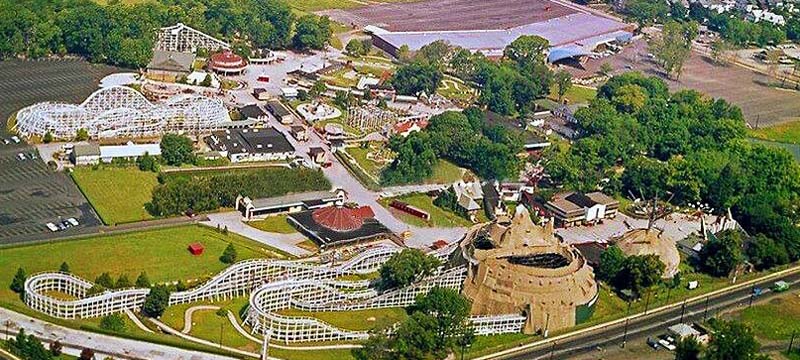
The book covers the period from the amusement park's 1896 opening until its final days in the mid 1970s. (A large shopping mall is now on the site. Like the U.S. needed another one.)
It was interesting to see how the park and the rides changed over the years. In order to keep people coming back, old rides would be discarded and new rides would replace them. In its early days, one of the biggest attractions ... (more >>>)
Drive-In Memories: The one drive-in chain I remember from early childhood is Hot Shoppes.
My parents used to stop at the one on Hunting Park Avenue, west of Broad Street in North Philadelphia. The burgers were very thick and juicy (a real treat for me) and the car hops wore snappy uniforms.
Hot Shoppes began as A&W Root Beer stands and were owned by Marriott. In 1927, Hot Shoppes was born, adapting a colonial architectural style with a bright orange roof. They looked a lot like Howard Johnson's of the period, except that they offered car hop service. And ... the food was better.
By 1960, there were 70 Hot Shoppe restaurants in seven states and the District of Columbia. In 1957, Marriott Corporation opened its first hotel and began moving away from Hot Shoppes. Two large dining chains were acquired, the Big Boy family restaurants in 1967 and Roy Rogers Family Restaurants in 1968.
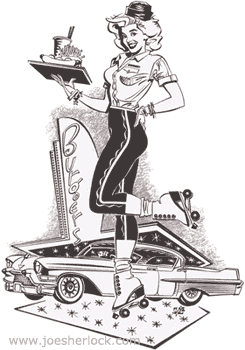
Philly's Hot Shoppes had all but disappeared by the early 1960s when McDonald's came to the Philadelphia market ...
...along with McDonald's wanna-bees such as Gino's (better than McD's), Steer Inn in Langhorne, PA (good cheese steaks) and Burger Chef (whose food was so bad, we referred to the establishment as Burger Shit. Burger Chef didn't last very long in Philly.)
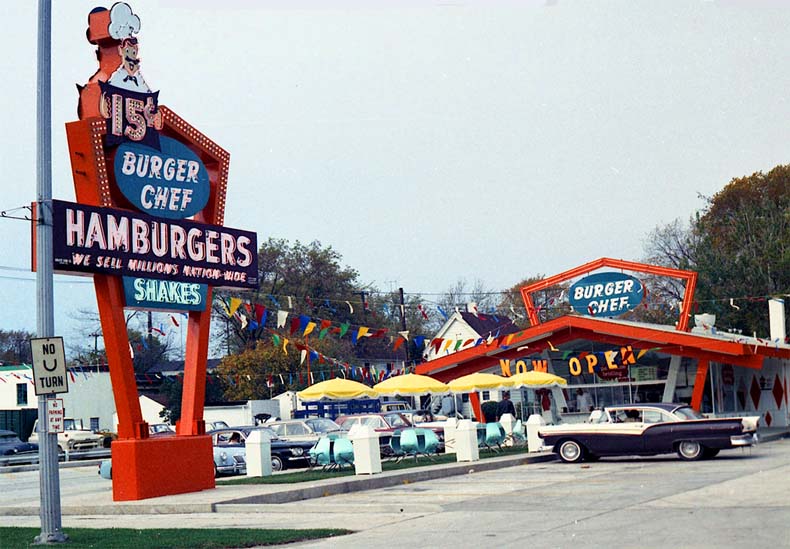
Then there was the unspeakable Hardee's, which - ironically - later merged with Burger Chef.
Roy Rogers arrived in the Philly area around 1970 and offered roast beef sandwiches which were better tasting than Arby's, an Ohio chain that later expanded into the Philadelphia market. But Roy's wasn't as good as Lum's - a midwest sit-down restaurant chain which disappeared in the early 1980s. (posted 7/7/08, permalink)
Father Divine, The Deusey And The Philadelphia Connection: There is an oft-held misconception that, even in the depths of the Great Depression, a new Duesenberg cost more than $25,000. While Deuseys were expensive, the statement is exaggerated.
Duesenberg expert Raymond A. Wolff wrote (Automobile Quarterly Vol. 4 No. 4 - 1966): "Only two of the American-bodied (Duesenberg) Js reached the $25,000 mark. These were the very-modernistic Walker LaGrande coupé of J.K. Lilly, Jr. and the 178 inch wheelbase Bohman and Schwartz 'Throne Car' made for the use of Father Divine. Both cars are still in existence, the latter registered in the name of one of Father Divine's disciples and in possession of the church. Technically, the late religious leader did not have ownership of any material thing." Hmmmmm. Shades of that other 'reverend', Al Sharpton.
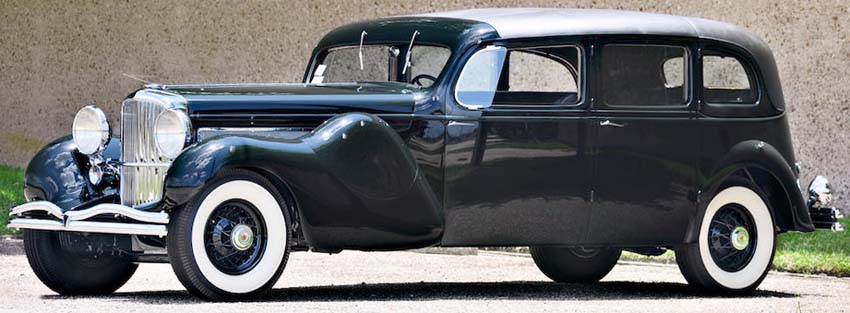
In 1936, coachbuilder Bohman and Schwartz company began construction of the largest and heaviest Duesenberg Model J Limousine Landaulet. The resulting auto had a star-studded white headliner, a hydraulically operated folding landaulet and an elevating rear seat. The car's wheelbase was 178.5 inches, 8.5 ininches longer than that of a Bugatti Royale.
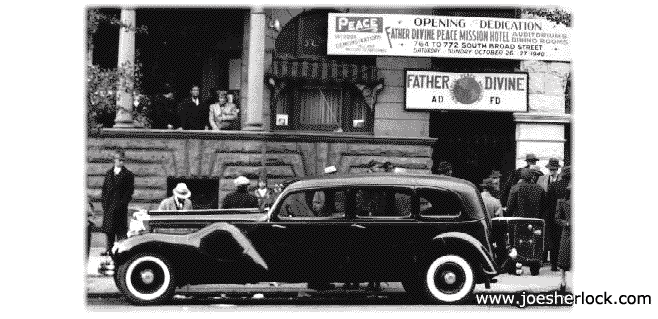
Father Divine was an African-American born around 1880. He was well-dressed and almost always wore a suit in public. Like many religious or cult leaders, the diminutive 5 foot, 2 inch Father was said to be quite charismatic. His sermons were emotionally moving and freely associated between topics. His speech was often peppered with words of his own invention like "physicalating" and "tangiblated". Other eccentricities were drawn from his doctrine. For example, nearly every sermon began with the greeting and exhortation, "peace!" Father Divine believed that "peace" should replace "hello." His popularity peaked in the 1930s, when his Divine Missons offered low-cost food and lodging to the Depression-era public.
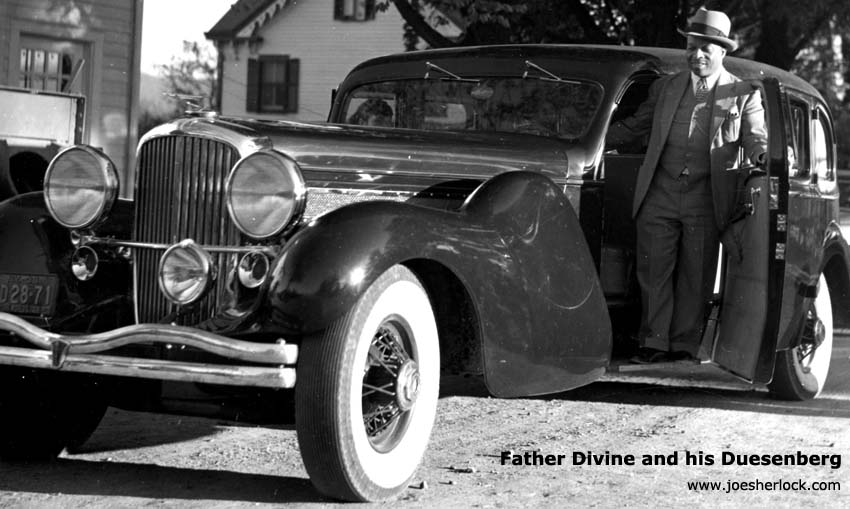
Divine later claimed to be God. He did made numerous contributions toward his followers' economic independence and racial equality. In 1942, he fled New York and established new headquarters in Philadelphia, Pennsylvania, rolling into town on a 16-car train, dubbed the 'Divine Special'. He brought with him his famous 7,000 lb. black 1937 Duesey. It featured a motorized throne that could elevate Father Divine so he could be better seen by his followers. When fully loaded, it regularly broke its rear wheels; even the over-engineered Duesenberg chassis couldn't take the extra weight of the monstrous body. It was equipped with 17-inch wheels with reinforced spokes and hubs.
After the death of his first wife, Father Divine married a 21 year-old white Canadian woman - a Big Deal in 1946.
In the 1940s, he acquired Philadelphia's Lorraine Hotel - an 1890s-era luxury apartment building which was later converted to a hotel. Father Divine assigned the deed to 300 of his followers and commissioned the two-story, neon-red Divine Lorraine Hotel sign that embossed the North Broad St. skyline. His properties were looked upon as "heavens" by his followers and were considered part of the "promised land." Father Divine opened the doors of the Lorraine to people of all races and creeds, and his rates were very low. In those days, he offered wholesome meals for 25¢ to anyone who showed up.
The Divine Lorraine was on Broad St. near Ridge Avenue - within walking distance of my high school. I slogged past it on numerous occasions.
By the 1950s, the press rarely covered Father Divine. When it did, it was done with mild amusement. For example, light-hearted stories ran when Father Divine announced Philadelphia was capital of the world and when he claimed to inspire invention of the hydrogen bomb. Father Divine's predominantly lower-class following ebbed as the economy swelled.
In 1953, a follower presented Father Divine with Woodmont, a 72-acre estate with a sprawling stone mansion - built in 1892 for the founder of Alan Wood Steel Co. - that commands a sweeping view of a rolling hillside in Gladwyne, a tony Philadelphia suburb. The 32-room French Gothic manor served as Father Divine's home until his death in 1965. He is buried on the property.
Father Divine's widow, Edna Rose Ritchings, died in 2017. Meanwhile, the Duesey has passed through the hands of several collectors. I saw the massive, impressive machine once at Las Vegas' Imperial Palace Collection in 1993. (posted 6/27/08, permalink)
The Rockin' Bird: Although he never lived in Philadelphia, James Lileks has written some nice words about legendary Philly Disc Jockey Joe Niagara. He also included an audio clip of a commercial and station promo done by Joe on the Cruisin' 1957 album.
The cassette and CD versions of Cruisin' 1957 are not identical, though - some of the song selections and commercials differ.
I was a faithful Joe Niagara listener from 1956 until he left WIBG for Los Angeles in 1959. In 1991, when I was visiting Philly, I found him on WPEN and wrote him a mash note, telling him that I played his Cruisin' 1957 tape whenever I drove my 1957 Continental Mark II. Joe mailed a handwritten reply, thanking me for my note and asking for a photo of my Mark II. He wrote, "I fell in love with that car back then. I'd love to see it again." I was happy to oblige.
Joe Niagara had a bit part in the Elvis Presley movie, 'Blue Hawaii', and did the voice-over for the movie, 'Breakfast at Tiffany's'. Joe is in the 1980 Guinness Book of World Records 1980 for playing the most (over 500) consecutive different versions of 'Stardust'. He died in June, 2004 of bladder cancer at age 76.
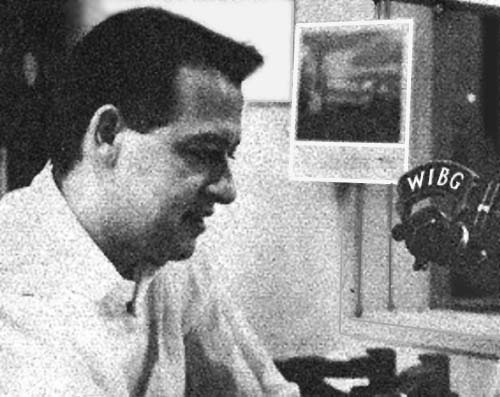
The DJ with the Wailin’ Pound of Sound is gone (and so is my white Mark II, for that matter) but I still can hear his voice ... because whenever I fire up my '39 Plymouth, I also fire up Cruisin' 1957. And drive around with the windows down with WIBG blaring from the speakers in competition with the V8 burble emanating from the dual Glasspacks. And fondly remember the Fifties.
Rest In Peace, Rockin' Bird. (posted 6/9/08, permalink)
Hy and Goodbye: Hy Lit, one of Philadelphia's pioneer disc jockeys, has died at age 73. 'Hyski O'Rooney McVoutie O'Zoot', as he often called himself, was born as Hyman Aaron Lit in South Philadelphia and came of age with rock-and-roll.
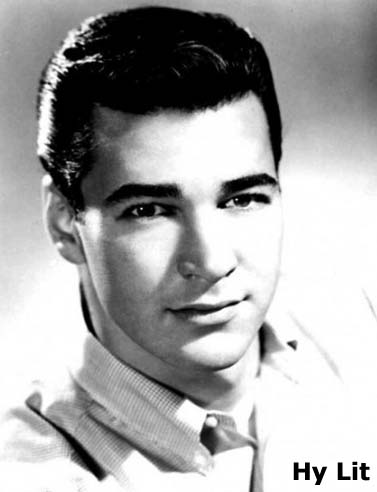
It has been said that, during the late '50s to mid-60s period, Hy's nighttime show on 'Wibbage' (WIBG radio) drew three-quarters of the listening audience. His signature tune was 'Quarter to Three' by Gary U.S. Bonds and he was known as "the Jet Jockey on Flight 99" which was the frequency for WIBG. Hy remained on the radio - at various stations - for 50 years, resigning in 2005.
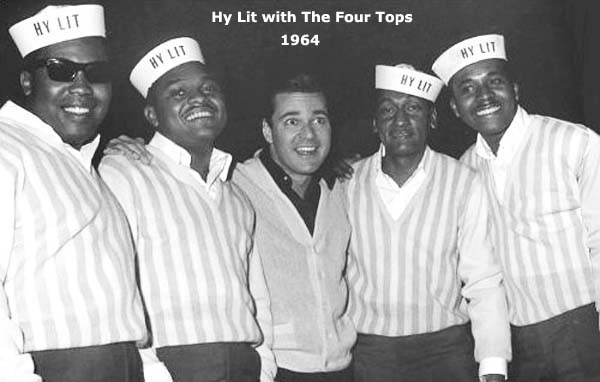
This is the sad end of an era. WIBG was the only station I listened to from 1956-65. Rest In Peace, Hyski. ( posted 11/26/07, permalink)
Hucksters: A good friend, who lives in Tokyo, wrote me about going shopping: "I went to the huckster." I hadn't thought about hucksters in years. I remember when hucksters (sometimes called truck farmers) used to drive slowly through our neighborhood in trucks with awnings over the beds selling fresh vegetables. It turns out that those huckster trucks actually had a name for the special body configuration. It was known as a 'canopy express'.
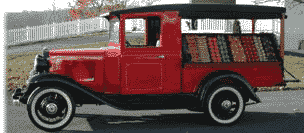 A canopy express is a light-duty cargo hauler, often based on the chassis of a panel or pickup truck. They were offered by several manufacturers in various sizes from half-ton to one-and one-half ton. The vehicles had open display areas behind the driver's seat commonly used for peddling vegetables and fruit but also used for other kinds of deliveries that require easy access. Many had roll-up or swing out canvas awnings on the side and back openings. A canopy express is a light-duty cargo hauler, often based on the chassis of a panel or pickup truck. They were offered by several manufacturers in various sizes from half-ton to one-and one-half ton. The vehicles had open display areas behind the driver's seat commonly used for peddling vegetables and fruit but also used for other kinds of deliveries that require easy access. Many had roll-up or swing out canvas awnings on the side and back openings.
As the U.S. became more suburbanized after World War II, sales of canopy express vehicles declined. GM offered the last ones in 1955.
In the '50s, everybody in our urban Philadelphia neighborhood had a milkman, a bread man and a farmer. And hucksters. And Salvage Guys who drove through the neighborhood in a beat-up stake body truck, shouting in a gravely voice: "Saaalllllllvaaaage. Any old newspapers, rags, metal ... saaalllllllvaaaage." No more.
We do still have a tin milk box left over from our last milkman in Willingboro, NJ from 1970 or so. It's a styrofoam-lined, galvanized one with an 'Ordered Enough?' reminder on the inner lid.
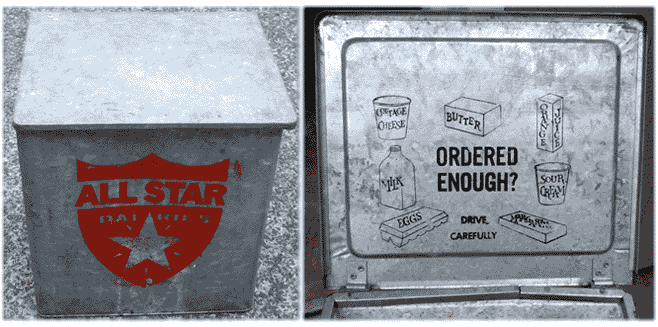
After we got a second car, my wife could drive to the store anytime she needed milk. So, like thousands of other families, we gave up our milkman. I miss seeing his Divco milk truck though.
My friend later reminisced about the coal delivery trucks in her old southern New Jersey neighborhood. Ah, yes - the ones with those scissors-jacks that lifted the dump box high off the chassis to help the coal flow and the steel chutes that traveled from the dump box through the little window in the basement of the house.
My grandmother's house - built in the mid-1920s - had one of those little windows. But the coal bin was empty, as the house was converted to oil heat before I was born. But the old bin was still dark and dirty with coal dust - you just couldn't seem to get rid of the stuff. It's very tenacious.
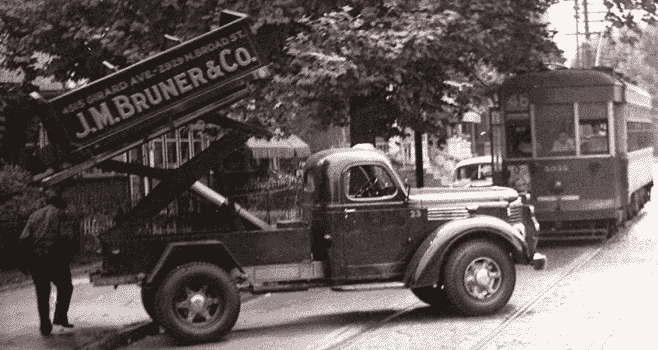
She later wrote: "I am on my way to the huckster now to get the groceries in. The one nearest to me on Tuesday, Thursday and Saturday." On Mondays, Wednesdays and Fridays, the truck is at another location.
So, in Japanese cities, they have semi-permanent hucksters rather than being continuously on the move.
My friend continued: "Anyway, for the two different areas, he has two different trucks. The large one for here, and the smaller one beyond. Naturally, the schedule changes with the weather. But on the cold winter days and the hellfire days of summer, he sells outside all day long without any protection from the elements. I have been going to him for 26 years."
The vegetable huckster lives on. And has at least one very loyal customer. (posted 6/6/08, permalink)
| NEXT PAGE |
Other Pages Of Interest
copyright 2004-21 - Joseph M. Sherlock - All applicable rights reserved
Disclaimer
The facts presented on this website are based on my best guesses and my substantially faulty geezer memory. The opinions expressed herein are strictly those of the author and are protected by the U.S. Constitution. Probably.
Spelling, punctuation and syntax errors are cheerfully repaired when I find them; grudgingly fixed when you do.
If I have slandered any brands of automobiles, either expressly or inadvertently, they're most likely crap cars and deserve it. Automobile manufacturers should be aware that they always have the option of trying to change my mind by providing me with vehicles to test drive.
If I have slandered any people or corporations, either expressly or inadvertently, they should buy me strong drinks (and an expensive meal) and try to prove to me that they're not the jerks I've portrayed them to be. If you're buying, I'm willing to listen.
Don't be shy - try a bribe. It might help.
|

